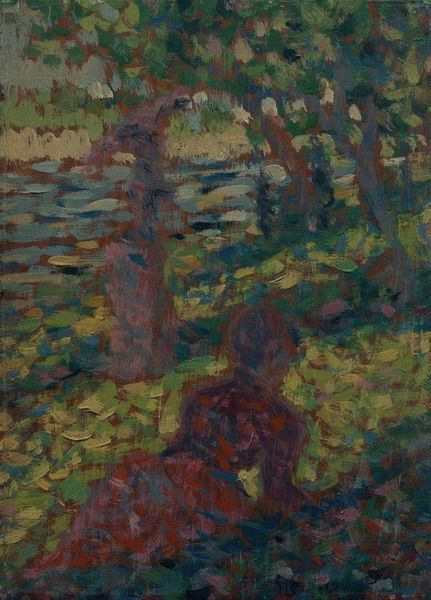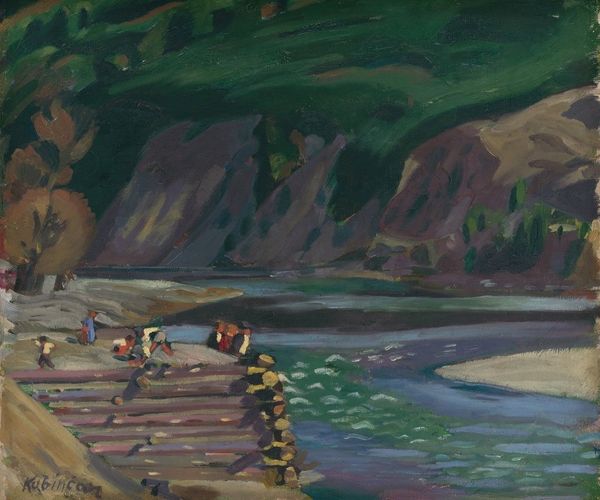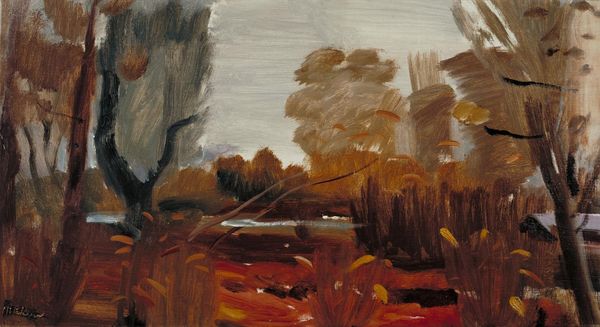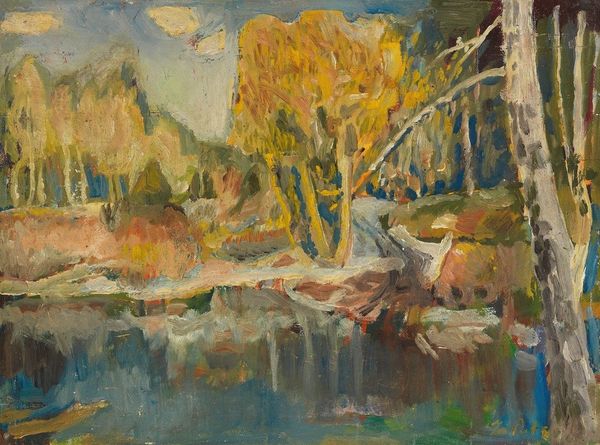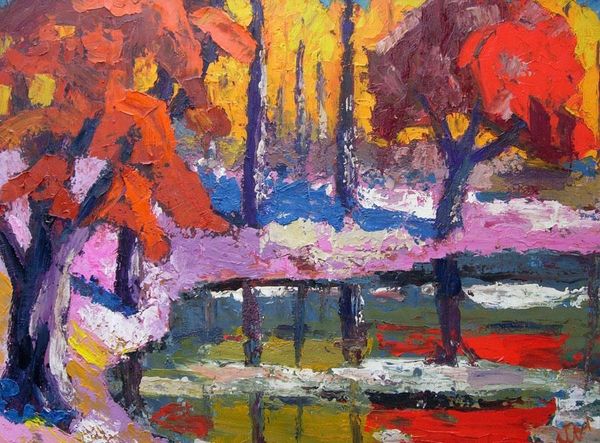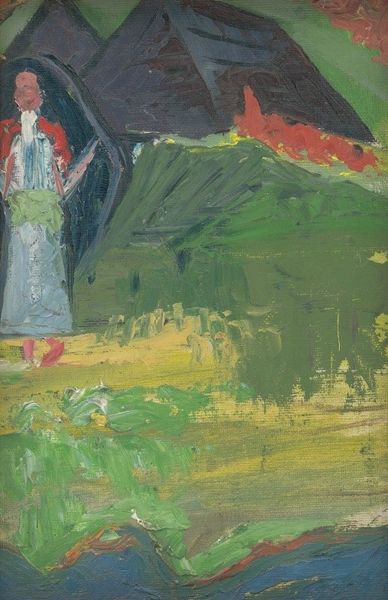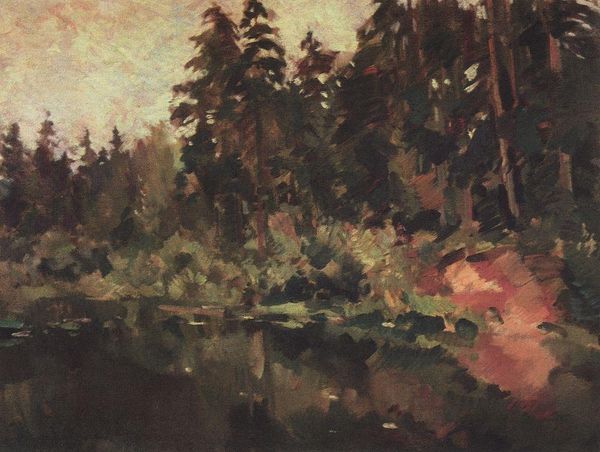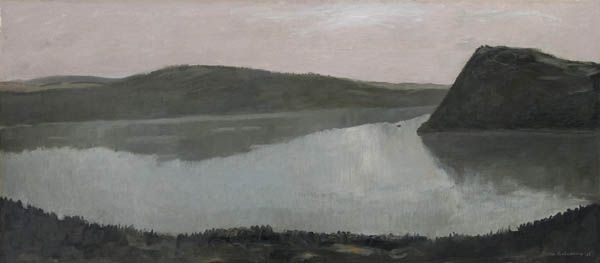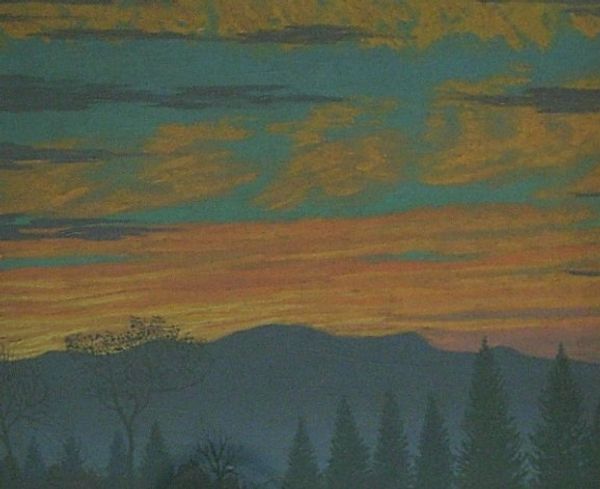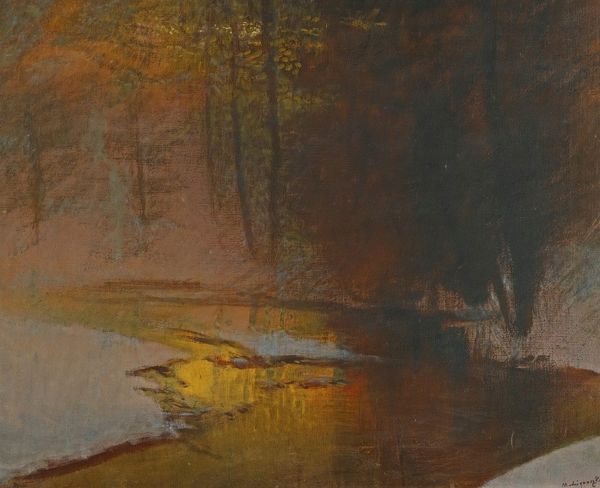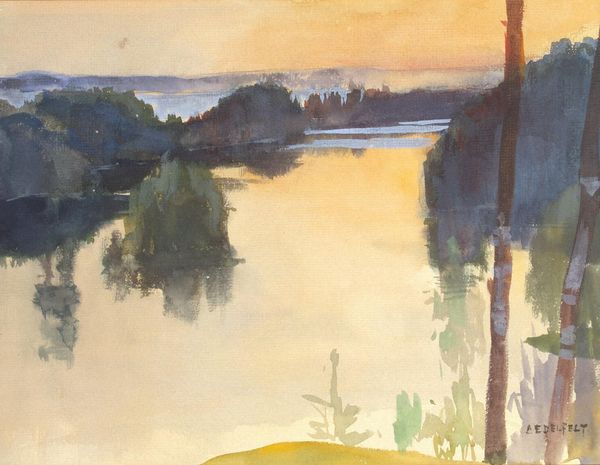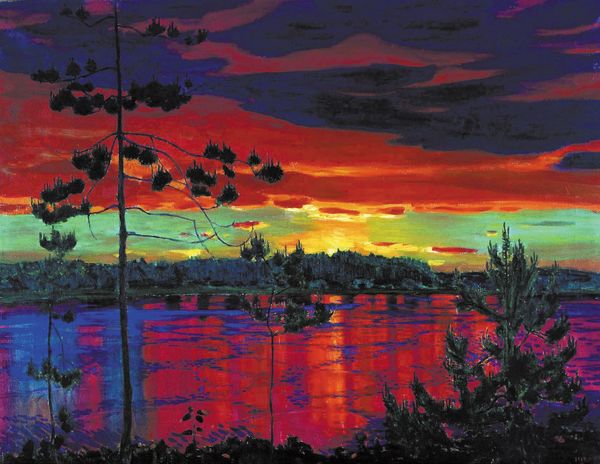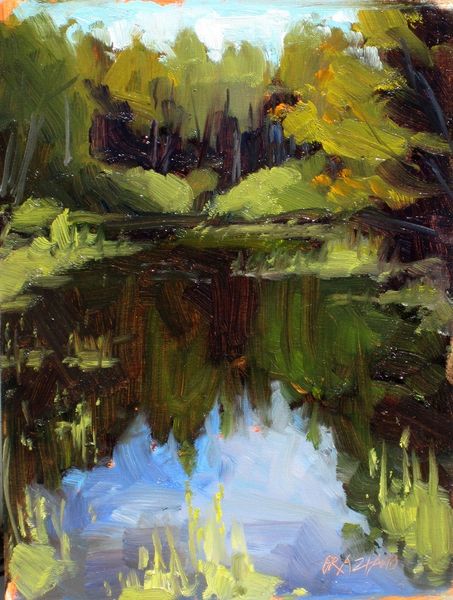
Copyright: Public domain
Editor: Here we have Akseli Gallen-Kallela's "Stockflotte," painted in 1908. It's an oil painting that evokes a certain stillness, despite the vibrant reflection of the structure in the water. The limited palette also strikes me. How do you interpret this work? Curator: Notice how the painting juxtaposes the ephemeral nature of the smoke with the enduring presence of the trees. It's as though Gallen-Kallela is drawing a connection between the transient human experience and the constant, cyclical rhythms of nature. Doesn’t it suggest the hut and plume exist as intrusions within a wider natural scheme? Editor: That's interesting! I hadn't considered the smoke as a symbol in itself. What does the light, or the absence of it, signify? Curator: Light here seems less about pure visibility and more about symbolic weight. Think about Finnish folklore: water is often a threshold, and fire a beacon of warmth and domesticity. The reflected fire, then, acts as a potent doubling of that core symbol, offering reassurance against encroaching darkness and perhaps something of the human spirit mirroring itself. What mood does this doubling generate for you? Editor: It creates a sense of mystery and invitation. The dark and light reflections give me a cozy yet mystical feeling, something comforting. I now see it as the structure's glowing invitation to safety within the unknown waters. Thank you! Curator: And the limited colors might indicate that humans were embracing minimalism, simplicity and a closer alignment with nature, and therefore were not so eager to paint and celebrate with more color. Editor: That’s great insight – how Finnish art of that time embraced simplicity as an intentional artistic act!
Comments
No comments
Be the first to comment and join the conversation on the ultimate creative platform.
